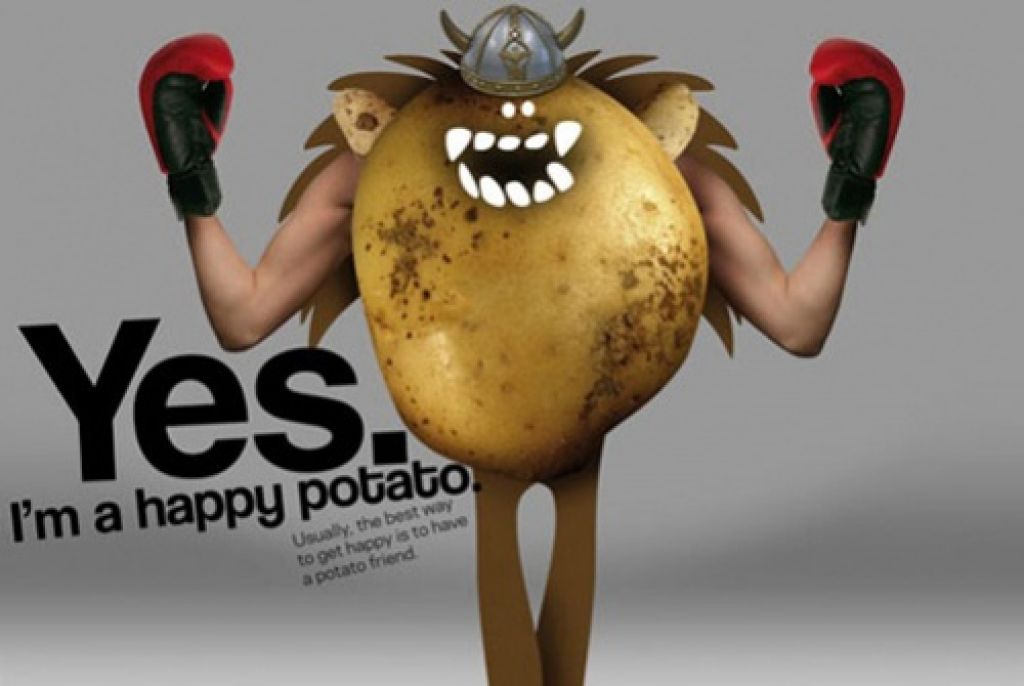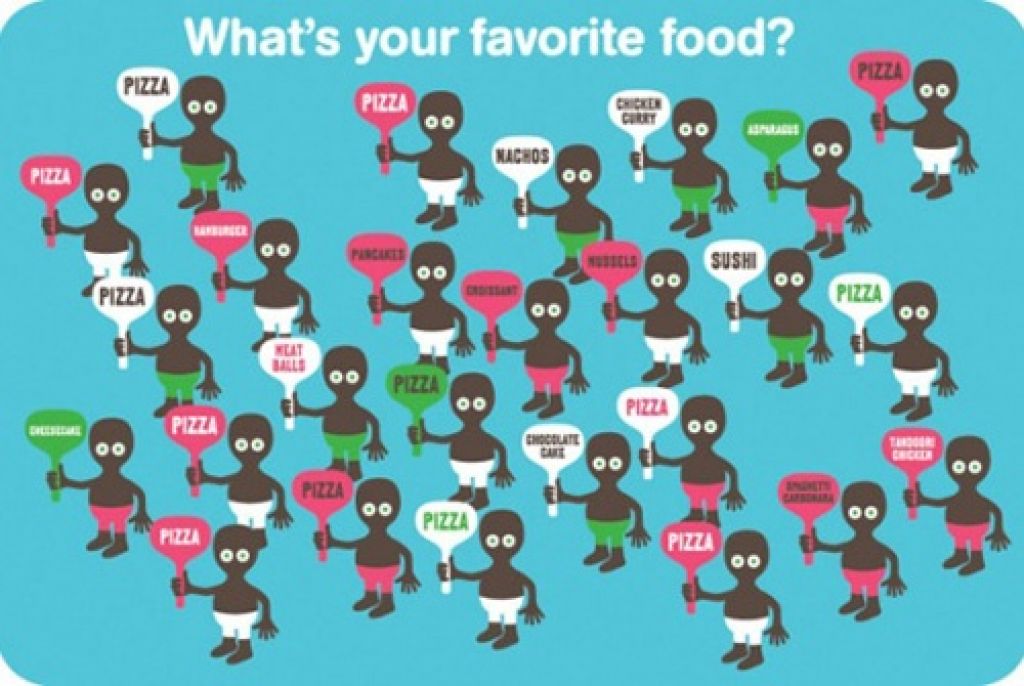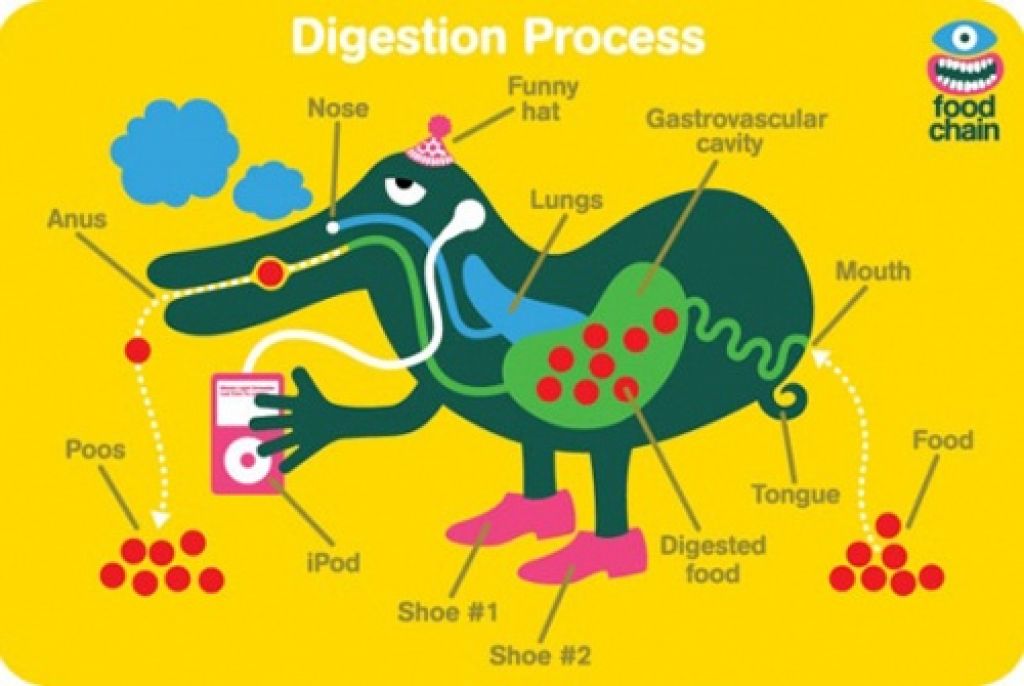Food Chain
The fantastical universe of Genevieve Gauckler
Expo info
On show
January 25 - March 2, 2008
Geneviève Gauckler designs characters. They look deceptively simple. Despite this simpleness – the design often consists of just a ‘vaguely human or potato-shape form, with two eyes, ears, arms and legs’ – so, despite this simpleness (and perhaps precisely because of it), her characters are extremely appealing.
This simpleness is deceptive indeed, for what do you actually see when you look at little colourful figures wearing oversized shoes and undersized hats? Figures that smoke pipes, and hold iPods. That get sick. Stare into space. Cheer at the sight of each other’s excrements. Are feeling hungry. Are looking for food. Are feeling bored. Tired. Don’t fancy a thing. Find humans a delicacy, especially the lips and the cheeks. Struggle with gastrointestinal disorders. What exactly are those Barbapapas-for-adults?
Welcome to the universe of Geneviève Gauckler. A world in which life is so delightfully simple because it revolves mainly around two things: to eat and be eaten.
Food Chain
When asked ‘why food?’ Geneviève Gauckler replies that food is both ‘superscary’ and perfectly normal. Food is everybody’s concern, whether you like it or not. Food is ambiguous, it is good and bad at the same time, or rather: it is. Food has to do with pleasure, disgust, disease, surplus, consumption, survival, energy, digestion, cyclical processes, cannibalism, decay, stench, body odour, obesity, superstition, religion, affluence, fertility. “We’re just a digestive tract,” she says. That is not pessimistic, it’s just a simple fact.
Fifty fifty philosophy
Photoshop and Illustrator are Gauckler’s most important tools. They are her yin and yang, together one. Crisp, friendly, simple vector forms populate fierce, adult, complex photomontages. Gauckler likes to alternate pixels with vectors. Text with image. Photo realism with graphic abstraction. Stagnation with movement. Funny with sad. Meaning with nonsense. Absurdism with logic. Colour with black-and-white. Never has the one a lead over the other, too much yes automatically leads to no. Today a commercial commission, tomorrow an autonomous project with Pleix. This counterbalancing of opposites is incorporated not only in method or medium but also in the work itself, in what you see when you look at it. After a complex, overloaded collage landscape consisting of countless photo fragments each of which detached and put in the right place with great patience comes a supersimple, abstract, monochrome shape, a blob with two little eyes, put onto the screen in two seconds. Nonsense, ridiculous, funny guy. There is Zen in her embracing these opposites (which she herself does not see as opposites). Putting things into perspective is essential; humour is her trademark. Gauckler just as easily invents a fake religion as new methods to attain happiness.
Breeding images
Gauckler does not touch pen or pencil when creating an image. Indeed, she hardly ever uses her digital drawing tools. If she needs a circle (drawing one requires no more than half a second), she scans her worksheet for one. She composes her images through sampling and copying. Her point of departure is something that she puts right in the centre of her worksheet. That could be an image but just as easily text. Around it are pictures (a great many pictures indeed!) crowding along the edges of the image waiting for Geneviève to spot them. She drags them to the centre of the sheet, into the artwork – damaged and all, for she chops, traces, hacks, and mutates like Dr Frankenstein until she has obtained the parts she is looking for. She crossbreeds images. In l’arbre génialogique (her comic book) there is the sentence: ‘Ce spectacle de duplication à l’infini était d’une extrême beauté’(This spectacle of infinite duplication was of rare beauty), and it is – although taken out of context – as if she is speaking about the very creation of images, her work, and her oeuvre. Sampled reproduction. A universe that like a benign virus is spreading everywhere, contaminating everything.
More, more, more
Gauckler’s many travels and the multitude of photos she has made have in 2007 resulted in a publication and an exhibition entitled Around the world. One of the collages in Around the World, Food, is exhibited in Food Chain. It is a huge pile of junk food, cakes, pizzas, body parts, garbage, worms, sausages, cheese, and disgusting sandwich spread – the whole lot carefully cut out in Photoshop, a tower dripping with fat, reaching to the skies. Tiny people are standing around looking at it. They are amazed. They take photographs.
The collage represents our degenerated Western society, our typical relationship with food, our ‘society of too much’. It is good to see that Gauckler immediately counterbalances this Western perception with an Eastern one. Equilibrium.
Gauckler is inspired by places of sacrifice, temples, and altars. She loves the colourful, profuse aesthetics of these places, the bustle, and the symbolism. In Asia, food is regarded as valuable, a sign of affluence. Something you offer to the gods, or to your ancestors, something you hold in deep reverence.
In the centre of MU, Gauckler has created a Food Altar, a mysterious dark spot where music sounds and little scraps of paper saying ‘Disco rules’ and ‘Pizza respect’ litter the floor. Here you can find cakes, cookies, rice, and worms. And here you can worship the God of Consumption under the watchful eye of an eternally jumping character. The Gaucklerian way of believing is funny, her religion palatable.
Yum yuck
Geneviève Gauckler likes to give advice. Advice is useful, practical, and instructional. Visitors to Food Chain will therefore come across a great many educational plates answering all kinds of questions with regard to eating habits. Ice cream for instance, is bad. Sitting in a chair contemplating an overripe pear and meditating is good. Having a potato character as a friend is good, too. Understandable, because they are both yellow. Broccoli, on the other hand, is violent. Too green. Of course, such gems of advice might come in handy, you never know.




